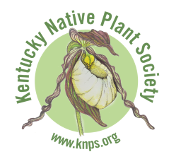Due to COVID-19, all KNPS Field Trips for 2020 have been cancelled. We are sorry for the inconvenience.
Our 2020 schedule of day hikes is now available! We will keep you posted on social media and our web site if there is a change. See you at Berea College Forest, Metro Lake, UK Arboretum, and Pine Creek Barrens! Registration is needed and forms will be available on the web site (30 days before) at www. Knps.org.
April 25, 9:30AM – 11:30AM at Berea College Forest
Join David Taylor, Daniel Boone National Forest Botanist for a hike in the Berea College Forest. Meet at the Indian Fort Parking Area at 9:30AM for a hike in dry and mesic forest. Bring water and snacks/lunch. The view on a clear day is great. Difficulty is moderate.
August 29, 10:00AM – 2:00PM at Metropolis Lake SNP, McCracken County

Jeff Nelson, KNPS Webmaster, will lead a short walk through one of Kentucky’s unique ecosystems, the floodplain woods on the shores of Metropolis Lake. This is one of the few places in Kentucky that has intact stands of bald cypress, water tupelo, and overcup oak. We should also see one of Kentucky’s rare plant species, snow squarestem, in full flower. Difficulty is easy.
October 3, 10AM – 12:00PM at The Arboretum, State Botanical Garden of Kentucky; 500 Alumni Drive, Lexington, KY
Join the UK Arboretum Curator, Emily Ellingson, on a two-mile autumn walk through a representation of the seven regions of Kentucky to learn about the collection, propagation, and maintenance of the state’s most common and rare flora. Difficulty is easy.
October 10, 10:00AM at Pine Creek Barrens

Join KNPS member Alan Abbott on a tour of Nature Conservancy property at Pine Creek Barrens in Shepherdsville. Only 40 minutes from downtown Louisville, the natural area houses limestone/dolomite glades and barrens, as well as wet, shady bottomlands along Pine Creek. Early October usually brings the flowers of two species rare to Kentucky, the Great Plains Ladiestresses (Spiranthes magnicamporum) and Barrens Silky Aster (Symphyotrichum pratense). Stiff Gentian (Gentianella quinquefolia) frequently emerges in mid-October and we might catch some early flowers. Time permitting, we will complete the entire two and a half mile trail. Difficulty is easy/moderate.












